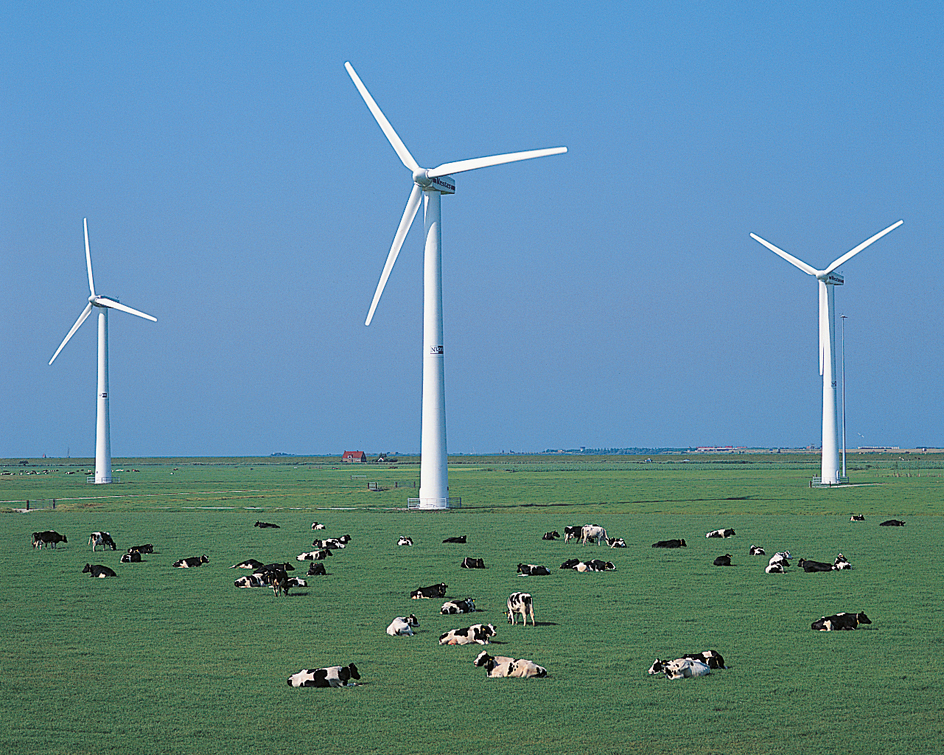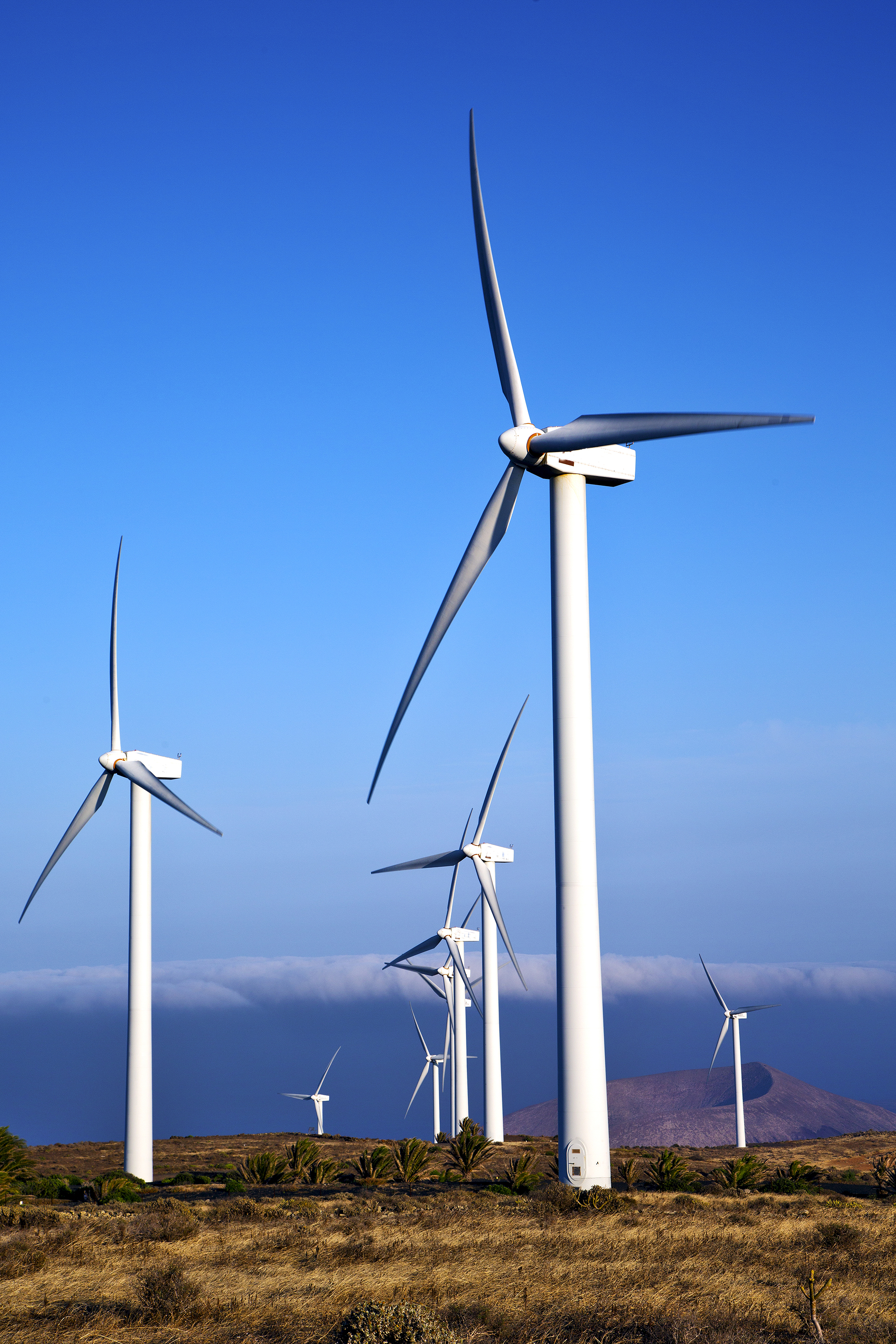Wind energy is the energy associated with the air that moves over Earth’s surface. The world’s growing demand for energy threatens to exhaust the supply of such fuels as coal, oil, and natural gas. But wind is a renewable energy source that cannot be used up. In addition, wind provides clean, nonpolluting energy.
Harvesting wind.
A wind turbine is a device with a rotor that turns the wind’s kinetic energy into mechanical energy. The mechanical energy can be converted into electricity. The smallest wind turbines typically have rotor blades that are less than 3 feet (1 meter) long. These are sometimes used to provide electricity to a single house or boat. The rotor blades of the largest wind turbines can be more than 200 feet (60 meters) long. Such large turbines are usually installed in a wind farm of up to several hundred turbines. The wind farm is connected directly to the electric grid.
A wind turbine rotor blade has an airfoil (aerodynamic wing shape) design. Air moving over the curved airfoil shape causes a low-pressure region on the top surface of the blade, and a high pressure region on the bottom surface of the blade. The difference in pressure pushes the blade toward the region of low pressure, causing the blades to rotate. The blades are connected to the rotor of an electric generator. Spinning this rotor produces electricity. Large turbines usually have slowly rotating blades, so a device called a gearbox is frequently used to increase the rotational speed.


Wind turbines are categorized as either vertical axis or horizontal axis turbines, depending on the orientation of the rotational axis. This means the shaft that the blades revolve around is either placed horizontally or vertically above the base. Designers of large wind turbines commonly use the horizontal axis design. For smaller wind turbines, both the horizontal and vertical axis designs are popular.
Challenges of using wind energy.
When a turbine is used to extract wind energy, only part of the kinetic energy of the wind is transferred to the blades of the device. Scientists believe it is possible to extract about 59 percent of the wind’s kinetic energy. This is called the Betz limit.
A number of other factors limit the extraction of energy from the wind. These factors include practical limits on the size of wind turbines and the availability of land upon which to erect such devices. Some people oppose the spread of wind turbines because they may pose a danger to birds and bats, which can fly into the moving blades. Others complain that the devices are unsightly or that they create too much noise.
Because wind speeds vary greatly over Earth’s surface, some sites are more suitable than others for wind turbine installations. In addition, wind does not blow at a constant speed. To ensure a reliable supply of electric power, wind turbines can be combined with generators using different fuel sources, with energy storage devices such as batteries, or with long-distance transmission lines capable of transmitting large amounts of electricity.
Loading the player...Wind turbines generating power
History of wind energy.
People have harnessed wind energy to do work for thousands of years. Ancient Egyptians used wind-powered sailing ships as early as 2800 B.C. Windmills probably originated in Persia, now Iran, during the A.D. 600’s. Most early windmills were used to grind grain. Wind turbines were first used to generate electric power in Denmark in the 1890’s. They were also used in some rural communities of the United States in the early 1900’s. Today, hundreds of thousands of wind turbines operate worldwide. They supply more than 7 percent of the electricity consumed globally.
